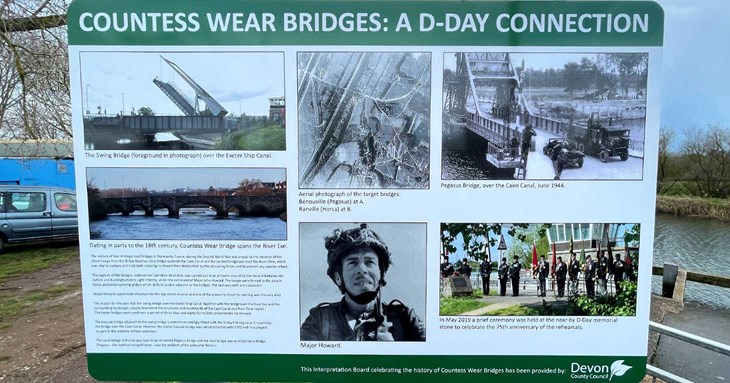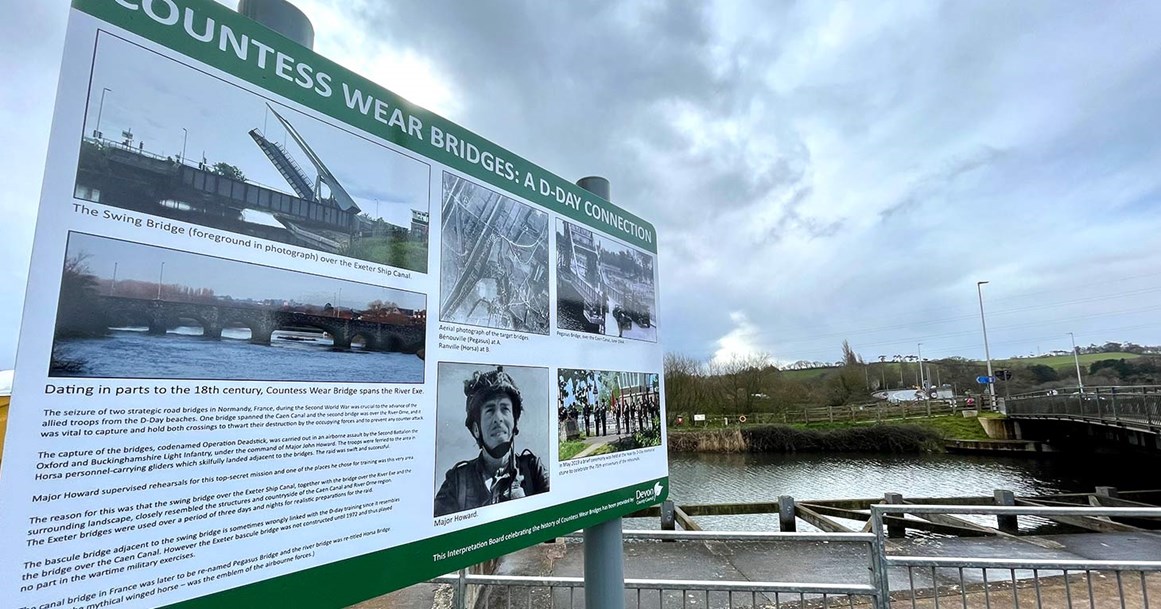New sign remembers Exeter bridges used in D-Day training
Published: 11 March 2021

The history of two Exeter bridges used for military training prior to the Normandy landings in the Second World War has been detailed in a new interpretation board.
The interpretation board has gone up beside the Countess Wear road bridge over the River Exe and the swing bridge over the Exeter Ship Canal.
The board describes how the bridges were identified and selected for the training of troops in May 1944, ahead of the D-Day landings.
The bridges were chosen because they mirrored the layout of two bridges in Normandy across the River Orne.

The training involved members of the Second Battalion, Oxford and Buckinghamshire Light Infantry (part of 6th Airborne Division) ‘attacking’ the Exeter bridges in daytime and at night, rehearsing a variety of scenarios in case the plan went wrong on D-Day.
Operation ‘dead stick’ as it was known was a success and the two French bridges were captured and maintained against enemy damage.
Led by Major John Howard, troops from this British unit landed in six Horsa gliders in the early hours of D-Day and seized the two bridges, which were subsequently named Pegasus Bridge and Horsa Bridge.
The daring operation by the first Allied troops to go into action on D- Day – would ensure that the Allies to control the crossings over the Caen Canal and River Orne, on the eastern flank of the Allied landings in Normandy. This reduced the risk of German attacks from that direction, and enabled the Allies themselves to attack on that flank.
In July 1994 a heritage stone was unveiled beside the bridges to mark the role they played in the lead up to D-Day.
At a commemoration ceremony to mark Operation ‘dead stick’ in 2019, it was agreed to add an interpretation board at the site of the heritage stone to provide people with more information.
The board has been erected by the City Council’s public and green spaces team and funded by Devon County Council, with valuable input from military historian Mike Passmore.
Now the board is up, the events surrounding ‘dead stick’ can be shared and enjoyed by the many visitors and residents that walk the bridge.
